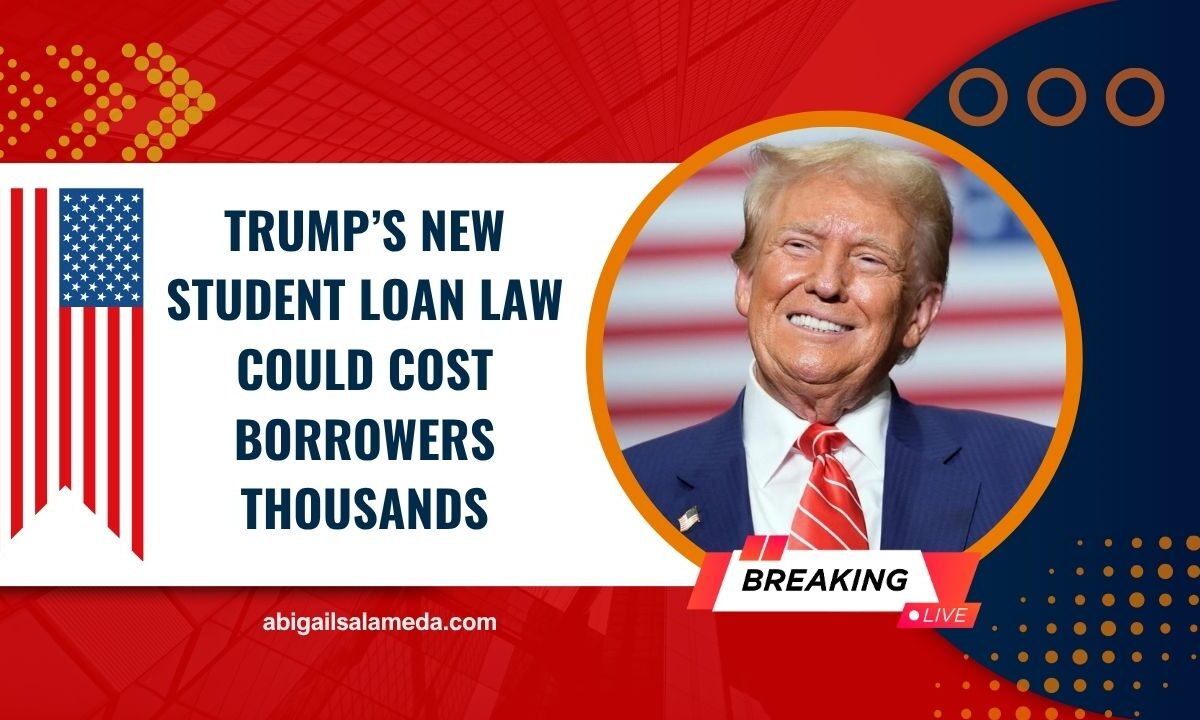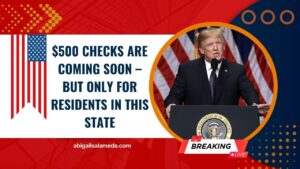In July 2025, former President Donald Trump officially signed the One Big Beautiful Bill Act, introducing sweeping changes to the federal student loan system.
The legislation significantly restructures repayment programs, phases out key forgiveness options & introduces stricter borrowing limits, resulting in higher costs for millions of borrowers.
This article breaks down what the law entails, its impact on various types of borrowers, and what you can do to prepare for the upcoming changes.
Key Changes Introduced Under the New Law
The law eliminates most income-driven repayment (IDR) plans, including SAVE, PAYE, IBR, and ICR, replacing them with only two repayment options.
It also places caps on how much borrowers can take out and reinstates aggressive federal collection tools.
These changes are set to roll out over the next three years, with full implementation required by July 1, 2028.
New Repayment Plans: What’s Replacing the Old System
Borrowers must now choose from only two plans:
1. Repayment Assistance Plan (RAP)
- Requires 1% to 10% of monthly income, depending on earnings
- Minimum payment: $10/month
- Loan forgiveness: After 30 years
- Limited deferment or hardship forbearance options
2. Standard Repayment Plan
- Fixed monthly payments
- Duration: 10–25 years
- No income adjustments or forgiveness
Borrowers who don’t actively choose a plan by the deadline will be automatically placed in one.
Estimated Annual Payment Increases for Borrowers
A study by the Student Borrower Protection Centre shows these changes may cost borrowers significantly more each year:
| Borrower Category | Estimated Annual Increase |
|---|---|
| Degree-holding individual | $2,929 |
| Some college, no degree | $1,761 |
| Family of four (degree-holder) | $2,808 |
Those who previously paid $0 under income-based plans, such as SAVE, may now face substantial new monthly payments.
Lifetime Loan Limits Imposed
The law also introduces strict lifetime borrowing caps, particularly for advanced degree programs:
| Loan Type | Lifetime Borrowing Cap |
|---|---|
| Graduate Students | $100,000 |
| Medical/Law Students | $200,000 |
| Parent PLUS Loans | $65,000 per child |
The Graduate PLUS program will be phased out, and Pell Grant eligibility rules will be tightened by 2026.
Borrower Protections Rolled Back
Many safety nets have been reduced or eliminated:
- Only two forbearances are allowed over a loan’s life
- Hardship and unemployment deferment removed
- Loan forgiveness under RAP requires 30 years of repayment
- Loan rehabilitation is capped at two times
- Paused interest resumes August 1, 2025, affecting 7.7 million borrowers
These changes could push up to 1.8 million borrowers into default by mid-2025, according to financial analysts.
Government Collection Powers Restored
The law reinstates several aggressive tactics for loan recovery, including:
- Wage garnishment
- Tax refund seizure
- Social Security and federal benefit deductions
These were previously paused or limited but are now fully reinstated, increasing the risk for borrowers who fall behind.
Private Loans: A Risky Alternative
As federal loan caps tighten, students may turn to private lenders. However, private loans:
- Often have higher interest rates
- Do not offer income-based plans
- Are not eligible for forgiveness programs like PSLF
Experts warn students to tread carefully, as private loans offer fewer protections and greater long-term financial risk.
How Borrowers Can Prepare
With a few years before full implementation, borrowers should act now:
- Use the Department of Education’s Loan Simulator to explore your future repayment options
- Contact your loan servicer to understand how your plan is affected
- Avoid missing payments—understand deferment, forbearance, and default consequences
- If considering grad school, rethink borrowing strategies
- Stay informed as more official guidance is released
The One Big Beautiful Bill Act brings sweeping reforms that will reshape how Americans repay their student loans.
While the law aims to simplify options, it removes key protections and forgiveness programs, leading to higher out-of-pocket costs for millions.
With deadlines approaching & interest resuming in August 2025, borrowers must act now to understand and adapt to the new system.
FAQs
When do the changes under the new student loan law take effect?
Most changes begin rolling out now, with all borrowers required to transition by July 1, 2028.
Will I still be eligible for loan forgiveness under the new system?
Only under the Repayment Assistance Plan (RAP), and only after 30 years of consistent payments.
Can I stay on my current IDR plan, like SAVE or PAYE?
No. All existing IDR plans will be phased out, and borrowers must transition to either the RAP or Standard Plan.




